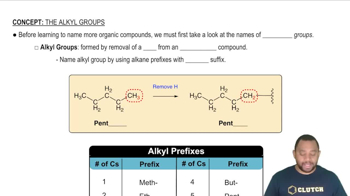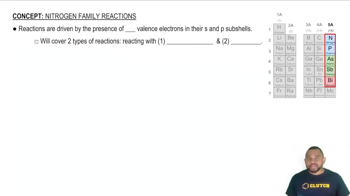Ch.23 - Organic and Biological Chemistry
Chapter 23, Problem 126
What is a nucleotide, and what three kinds of components does it contain?
 Verified step by step guidance
Verified step by step guidance1
A nucleotide is a basic building block of nucleic acids, such as DNA and RNA, which are essential for storing and transmitting genetic information in living organisms.
Nucleotides consist of three main components: a nitrogenous base, a five-carbon sugar, and a phosphate group.
The nitrogenous base can be one of the following: adenine (A), guanine (G), cytosine (C), thymine (T) in DNA, or uracil (U) in RNA.
The five-carbon sugar is either deoxyribose in DNA or ribose in RNA, which differentiates the two types of nucleic acids.
The phosphate group is attached to the sugar molecule and links nucleotides together through phosphodiester bonds to form the backbone of nucleic acid strands.
Key Concepts
Here are the essential concepts you must grasp in order to answer the question correctly.
Nucleotide Structure
A nucleotide is the basic building block of nucleic acids, such as DNA and RNA. It consists of three main components: a phosphate group, a five-carbon sugar, and a nitrogenous base. The arrangement of these components determines the nucleotide's specific identity and function within the nucleic acid structure.
Recommended video:
Guided course

Resonance Structures
Phosphate Group
The phosphate group in a nucleotide is a phosphorus atom bonded to four oxygen atoms, one of which is double-bonded. This group is negatively charged and plays a crucial role in linking nucleotides together through phosphodiester bonds, forming the backbone of nucleic acids. It also contributes to the overall energy dynamics of the molecule.
Recommended video:
Guided course

Alkyl Groups
Nitrogenous Base
The nitrogenous base is one of the three components of a nucleotide and can be classified into two categories: purines (adenine and guanine) and pyrimidines (cytosine, thymine, and uracil). These bases are responsible for the genetic coding and pairing in DNA and RNA, as they form hydrogen bonds with complementary bases, ensuring the stability and integrity of the genetic information.
Recommended video:
Guided course

Nitrogen Family Reactions
Related Practice
